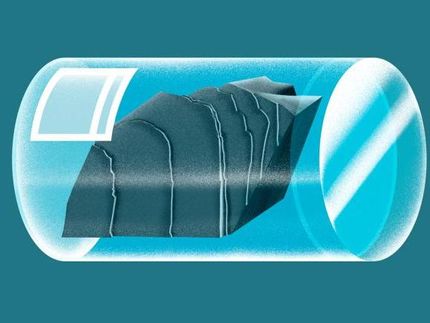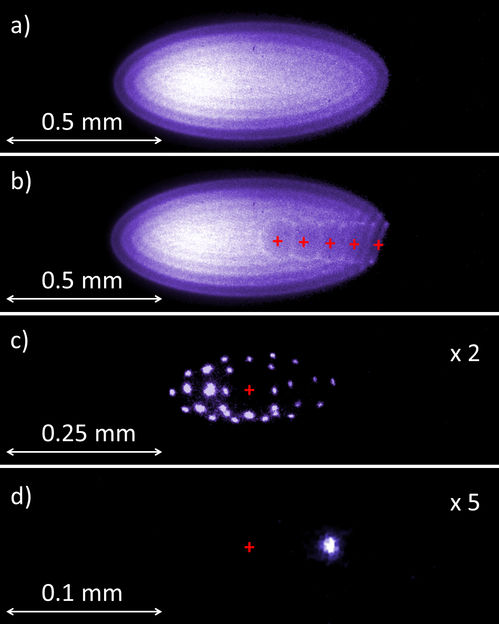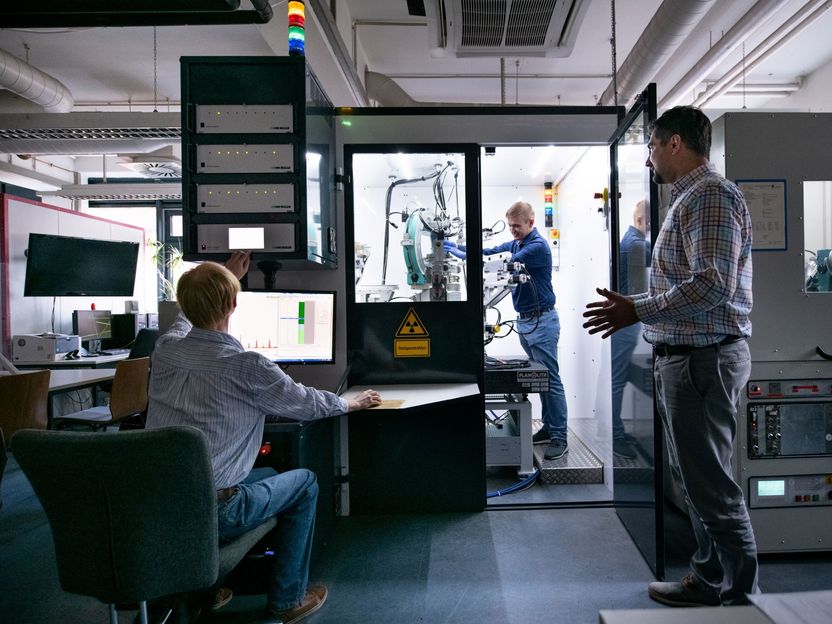Third-highest oxidation state secures rhodium a place on the podium
Discovery is a real surprise
oxidation states of transition metals describe how many electrons of an element are already engaged in bonding, and how many are still available for further reactions. Scientists from Berlin and Freiburg have now discovered the highest oxidation state of rhodium, indicating that rhodium can involve more of its valence electrons in chemical bonding than previously thought. This finding might be relevant for the understanding of catalytic reactions involving highly-oxidized rhodium. The result was recognized as a „very important paper“ in Angewandte Chemie.
Transition metals in high or unusual oxidation states might play an important role as catalysts or reaction intermediates in chemical reactions. Because transition metals are already well characterized in most cases, the discovery of a new oxidation state of rhodium came as a real surprise. The identification of rhodium(VII) was made possible by PhD student Mayara da Silva Santos and co-workers, who were able to isolate the species from any reactant in a low-temperature ion trap, and perform x-ray absorption spectroscopy for its characterization.
BESSY II was essential for the discovery
These kinds of experiments are highly demanding, and can, at present, only be carried out at BESSY II. „The combination of advanced sample preparation, low-temperature ion trapping, and x-ray spectroscopy is unique. Because these essential tools can even be applied to more complex systems, we anticipate further insight into exotic transition metal oxides“, says Vicente Zamudio-Bayer, head of the ion trap group at beamline UE52-PGM, who develops and operates the ion trap endstation at BESSY II. „What was important for us was that our surprising experimental findings could be substantiated by Sebastian Riedel‘s group at FU Berlin, who performed state-of-the-art calculations on the species in question“, explains Zamudio-Bayer. “Even rhodium in oxidation state +6 is very rare, so we had to be extremely careful about +7. New oxidation states are not discovered every day”, says Mayara da Silva Santos.
Catalytic relevance of a potential reaction intermediate
“This is the third-highest oxidation state of all elements. The fact that rhodium(VII) exists, but was unknown, could imply that it might have been overlooked when analyzing pathways of chemical reactions”, Zamudio-Bayer points out.
Possible stabilization for further use
The discovery of rhodium(VII) was made for gas-phase species, but a stabilization of the trioxidorhodium cation by weakly coordinating anions seems possible, based on comparison with other known compounds . This could open prospects for further characterization or applications. “Our rhodium(VII) species is highly reactive, but understanding these seemingly exotic species could lead to improved materials in the future,” Mayara da Silva Santos adds.
Original publication
Most read news
Original publication
M. da Silva Santos, T. Stüker, M. Flach, O. S. Ablyasova, M. Timm, B. von Issendorff, K. Hirsch, V. Zamudio-Bayer, S. Riedel, J. T. Lau; The highest oxidation state of rhodium: rhodium(VII) in [RhO3]+; Angew. Chem. Int. Ed. (2022)
Organizations
Other news from the department science

Get the analytics and lab tech industry in your inbox
By submitting this form you agree that LUMITOS AG will send you the newsletter(s) selected above by email. Your data will not be passed on to third parties. Your data will be stored and processed in accordance with our data protection regulations. LUMITOS may contact you by email for the purpose of advertising or market and opinion surveys. You can revoke your consent at any time without giving reasons to LUMITOS AG, Ernst-Augustin-Str. 2, 12489 Berlin, Germany or by e-mail at revoke@lumitos.com with effect for the future. In addition, each email contains a link to unsubscribe from the corresponding newsletter.




















































